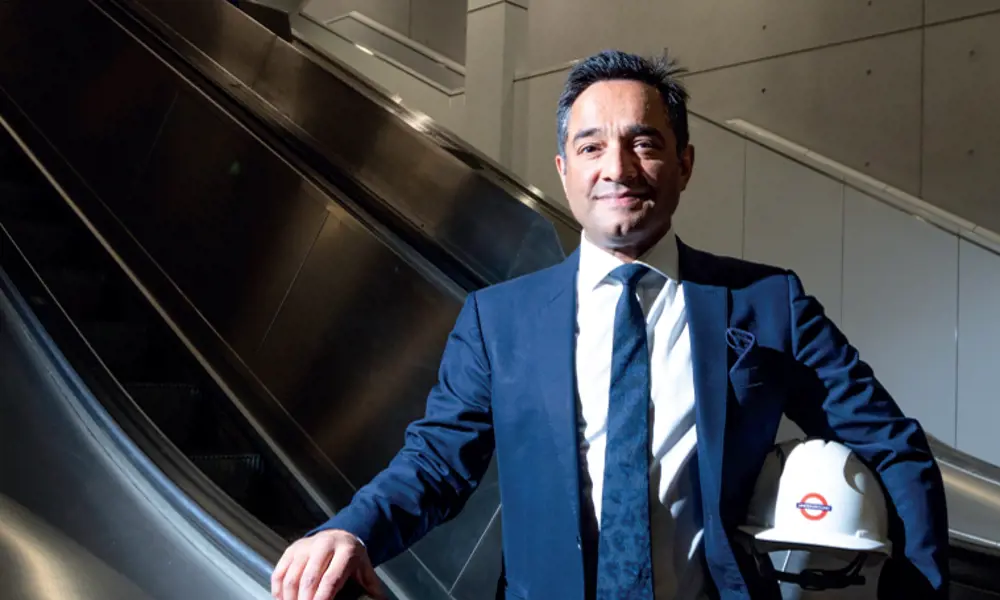
Keeping complex systems on track
There is a significant difference between tinkering with your uncle’s car and managing nearly 700 engineers on one of the world’s busiest metropolitan railway systems. But that is how Kuldeep Gharatya FREng, Head of Engineering for major programmes in Transport for London (TfL), turned his mechanical engineering qualification into a plan to bring the concepts of systems engineering into modern railway engineering.
Gharatya had a typical introduction to engineering. Maths and physics were always his best subjects at school. However, apart from his brother-in-law, there were no engineering role models in the family. Indeed, he confesses that he didn’t have much of an idea of what engineering was about. When it came to a degree course, he wanted to do something useful. “I knew that engineering was quite creative. It was to do with problem-solving, but also rewarding.”
I knew that engineering was quite creative. It was to do with problem-solving, but also rewarding.
Kuldeep Gharatya FREng
As a Londoner, Gharatya looked local and enrolled on a mechanical engineering course at the University of Westminster, followed by a year at UCL studying for a graduate diploma in mechanical engineering. He remained in the city for his first job as a graduate mechanical engineer with London Underground (LU), where he worked to keep trains running and on projects such as the Jubilee Line extension.
A systems approach
As Gharatya became familiar with LU, he observed the importance of the different engineering systems needing to work together to deliver the required outcome. He began to see how LU could benefit from a systems engineering approach. At the time, this way of seeing engineering projects on a grander scale was relatively new.
Working with different departments he “could see that there was not enough communication between the disciplines”. This led to some “siloed thinking”, he adds, and this was happening in an increasingly complicated world. “Our signalling systems and trains themselves were becoming more complex. The city itself was becoming more complex. Our ridership was growing at a significant rate. It was unsustainable for us to deliver over four million people a day on a Victorian system without significant investment in the infrastructure. It was a perfect storm of increasing demand, increasing expectations, increasing complexity, and operating at the edge of the performance boundary in a tightly coupled system. We needed to think about this very, very differently.”
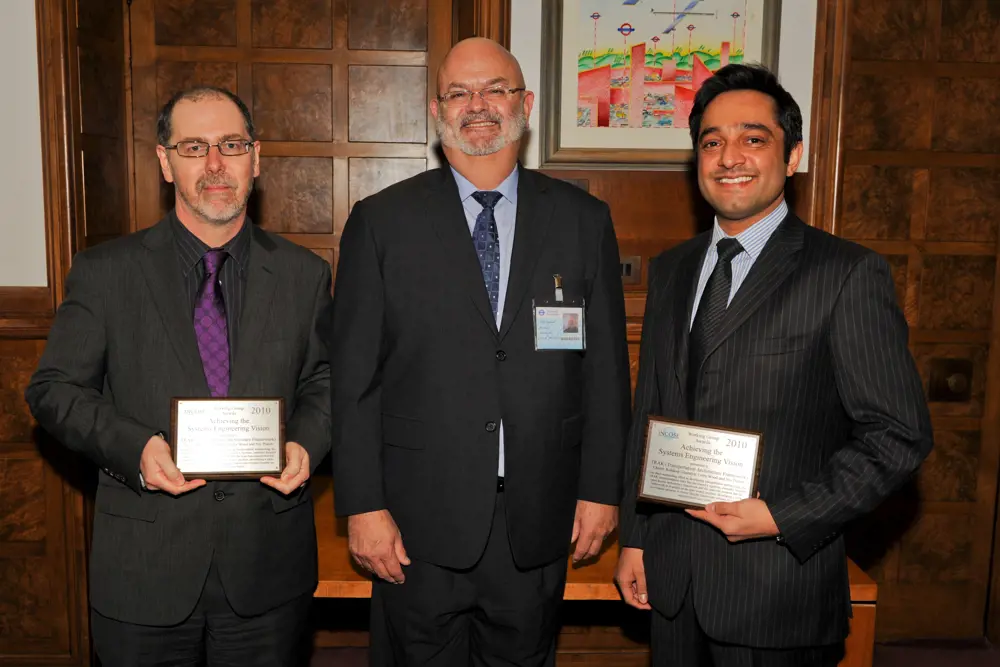
Quick Q&A
The Beatles, football and complexity are a few of Kuldeep Gharatya's favourite things...
What inspired you to become an engineer?
The drive to solve complex problems.
What are you are most proud of?
Helping to form some of the highest performing and happy teams!
Who influenced your engineering career? (Favourite mentor?)
I would have to say my mentor and LU chief engineer, the late Eddie Goddard.
What’s your advice to budding engineers?
Delivering complex things takes teamwork – but also determination and creativity.
Best bit of the job now?
Developing the leaders of tomorrow and seeing the city change because of our work.
Which record/book would you take to a desert island?
The Beatles Collection and The Guide to Building a Boat 😊.
Most impressive bit of engineering to look at?
Well – a vanguard nuclear submarine is pretty impressive when you see it up close!
What do you do in your spare time?
I love playing and watching football.
Gharatya thought that LU could benefit from systems engineering. The concept had been around for about half a century but it didn’t begin to take root until the 1990s and had yet to make it into engineering education. In 2004 Gharatya enrolled on a master’s degree in systems engineering at UCL’s Centre for Systems Engineering. There, he worked with engineers from defence and aerospace companies, such as Boeing, Airbus, the Ministry of Defence, and BAE Systems. “It was great talking to them because it … makes you realise that we all suffer the same challenges. It doesn’t matter what the industry is.”
Gharatya returned to LU and started to embed systems engineering into the organisation. Still a novel idea at the time, it was one of the first rail operators to formally take on the approach with a dedicated team.
When asked for his own potted description of systems engineering, Gharatya replies: “You’ve put me on the spot.” The problem starts with the title. “Systems engineering isn’t about just engineering. It’s about the whole system, which includes people, the environment... It includes a lot of people who aren’t engineers, the people who use the system, the people who funded the system, I could carry on”.
Gharatya recalls another attempt to explain what he did. “I remember saying, it’s like, common sense. But, like my dad used to say … the thing about common sense is it’s not very common.”
Gharatya admits that he too had started with an engineering focus. He recalls his keynote speech in 2005 when he had concentrated on the importance of systems engineering for transport. Five years on, his view had changed to “it’s not about systems engineering, it’s about systems thinking”. It must start at policy, government, all the way down through to delivery.
Systems engineering isn’t about just engineering. It’s about the whole system, which includes people, the environment... I remember saying, it’s like common sense. But, like my dad used to say … the thing about common sense is it’s not very common.
Kuldeep Gharatya FREng
His view is that the ‘engineering’ in the title has held back the adoption of systems engineering for the past 20 years. It made people think “that’s just something for the engineers to do, and not for us”. Systems engineering demands a fundamentally different approach to projects. He believes in spending as much time as possible “in the problem domain”, planning what you have to do, before rushing into “the solution domain”. You have to think 90% planning and 10% implementation, “because the cost is in the implementation”.
To him the case is obvious. “If you look at major programmes around the world, from nuclear, aerospace, transport, HS2, Crossrail, or the Northern line extension, they are incredibly complex systems. If we hope to deliver them efficiently, effectively, and achieving the outcomes that we originally prescribed, we must be very, very good at systems engineering.”
Gharatya soon became recognised as LU’s resident systems engineer. “What I’m known for really is helping transport, rail specifically, embrace systems engineering.” He became the systems engineer in LU’s Engineering Directorate in 2004. Then, Head of Systems Integration and the Systems Engineering Manager of its largest programme in 2007.
Never one to blow his own trumpet, Gharatya does not make grand claims for the billions saved over the years through systems engineering. Instead, he jokes that the benefits have been in reduction or avoidance in cost and time overruns, which, when looking back, is always hard to quantify. He is also modest about his own role and instead refers to his teams when describing the rise of systems engineering at LU.
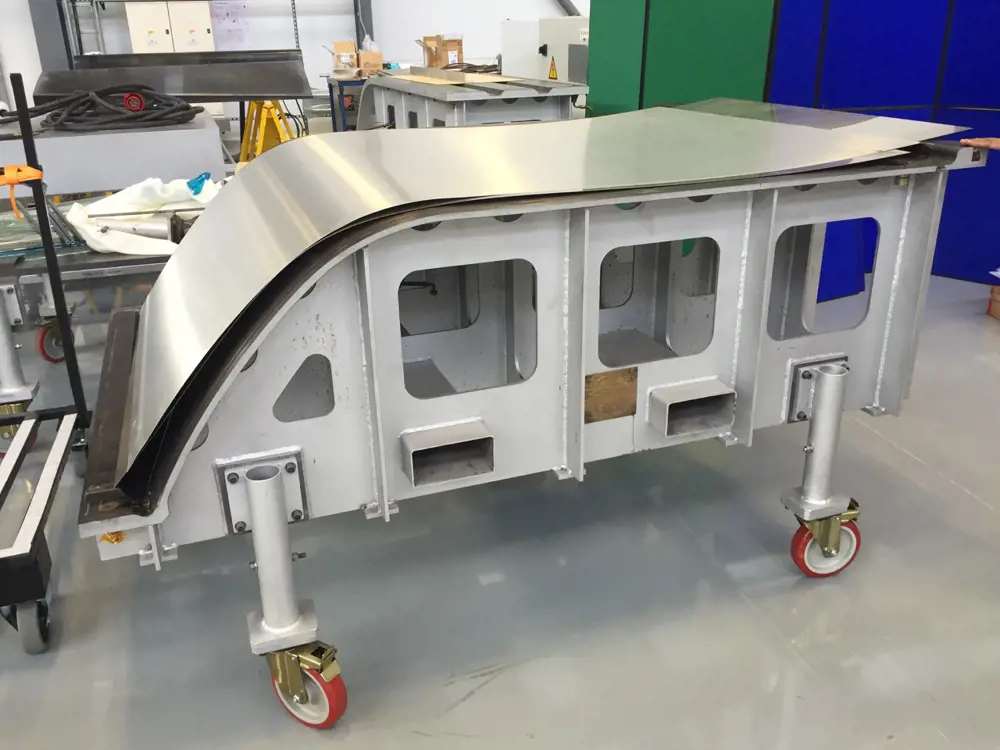
A prototype lightweight door for London Underground trains, which TfL engineers developed in partnership with the National Composites Centre. For passengers, the underground system begins and ends at the doors. Lighter doors not only save on energy, they can open and close more quickly, or be made bigger, so that people can get on and off more quickly. Trains with lighter doors can spend less time at the platform, allowing more journeys per hour on a line © TfL
Sliding doors
Why changing tube train doors could be a big deal for passengers and the planet
If a systems engineer wanted trains to be more reliable and quicker for passengers to get on and off, the least obvious starting point would be “let’s change the doors”. However, that’s exactly what the team did in one of Gharatya’s favourite projects. A decade ago the Department for Transport’s innovation team, working with the National Composites Centre in Bristol and TfL’s engineers, came up with a prototype lightweight door, which removed a tonne from the weight of a train.
Weight is a key factor for train engineers and has many knock-on effects. Lighter trains don’t just save energy, they also save on the cost of track maintenance. Door motors can be an unreliable component of a train. Lighter doors would be more reliable and quicker to open and close.
Lighter doors could also save a couple of seconds on how long the train has to stay in the station, which is worth a lot of money on a high-frequency metro system. Another idea could be to keep the doors the same weight but make them twice as big so that passengers could get on and off more quickly.
Unfortunately, the project also revealed a ‘system’ challenge when it came to finding someone to make the doors. A key aspect of Gharatya’s systems thinking is that it must include the wider supply chain. “We’re not a train manufacturer. What we needed was someone to take that leap of faith in the manufacturing side, ideally in the UK.” The consortium proved it could be done; the next step was for the supply chain to take that forward in train design, which is yet to happen.
However, the project did help to spread the word about the bigger environmental challenge. “At that point in time not many people were talking about carbon or decarbonisation, If you think about it, saving a tonne per train, whatever train you’re on – electric, diesel or otherwise – it is now probably more compelling than it was then.”
Integrated engineering
The work of the systems team came into its own when LU was delivering the Victoria Line upgrade, which would increase the frequency of trains. It had to prevent overheating through the energy used. Heat has been a longstanding issue for the underground, particularly when aiming to run more trains in certain sections. “We were optimising the system in such a way that we were not using the additional power originally forecast and thus weren’t generating heat that invariably would need to be removed. We were able to run 36 trains an hour on the Victoria line, one of the most intensive services in Western Europe. This optimisation saved hundreds of millions of pounds in whole life costs and gave an entirely new perspective on trying to understand how to cool the tube.”
The engineers could change the operating regime thanks to their ability to build complex models of the network and simulate various strategies for running it. “There’s always been some form of modelling and simulation, but we really did push that to ever more complexity, ever more systems, [and] integrating those. Instead of having separate simulation capabilities, we wanted an integrated facility, an integrated simulation capability. Then that was extended to creating 3D virtual environments.”
That laid the foundation for the use of virtual reality that allowed engineers to ‘walk around’ in the environment that they were preparing to build. “They could spot things that didn’t feel right,” Gharatya explains. This approach came into its own when LU wanted to reline the tunnel between Bond Street and Baker Street without having to shut down the line (see box ‘Open data’).
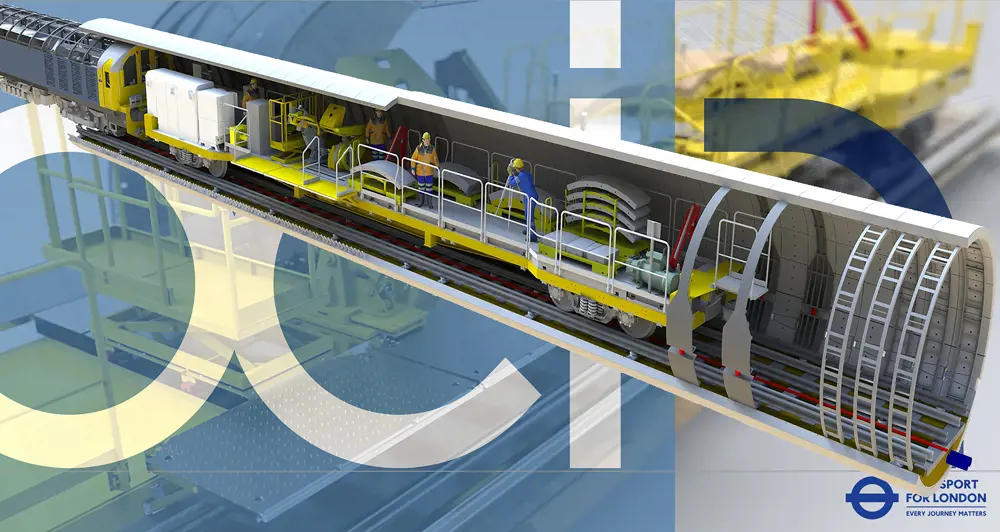
Open data
Systems engineering thrives on knowing what is going on.
At TfL this means collecting data on the rail network’s many different components and systems. Over Gharatya’s career he has seen an explosion in the amount of data that engineers can gather and have to manage and understand.
That data is the basis of the modelling and simulation that underpins system engineering. “Instead of having separate simulation capabilities, we wanted an integrated simulation capability. And that was extended to creating 3D virtual environments.” In effect, this allows engineers from TfL and its supply chain to walk around in the environment that they were planning to build. “That was brilliant, not only for our customers, but for our operational and maintenance colleagues. They could spot things that didn’t feel right.”
It went so far as modelling the ‘factory’ that would do the work. That was designed and run in a digital environment before execution on site, he adds. In this way, the time spent before the work began significantly reduced the time it took to do the work. “It gave us far more confidence in terms of what we were doing.”
This approach came into its own during the project to reline the tunnel between Baker Street and Bond Street. Faced with working on a live line, the engineering team designed the entire programme working on a digital twin.
For Gharatya, data must pervade the system so that people at every level of the organisation can understand what is going on. “I don’t believe that the data should just be modelled or understood by a team that looks at data.”
“I’m still surprised today that data is just not so freely accessible to everyone.” TfL was the first to have an open data policy. “We’re really proud of that. It’s generated tens of millions of pounds worth of value and other cities have followed suit.”
One example of where data can have a wider impact was in the Wayfindr project from TfL’s innovation team working with the Royal Society of Blind Children and Ustwo, a London-based software company. They worked with visually impaired people who were very technology ready and who believed they could navigate complex transport systems without the need to be escorted.
Users received directions on their smartphones to help them find their way around on LU. The project resulted in an open standard. But for Gharatya it was an opportunity to test the concept rather than a technology demonstration. He knew that the rapid progress of technology would enable all manner of innovations. “The concept was the important thing and opening people’s eyes, both internally and externally, to what was the art of the possible.”
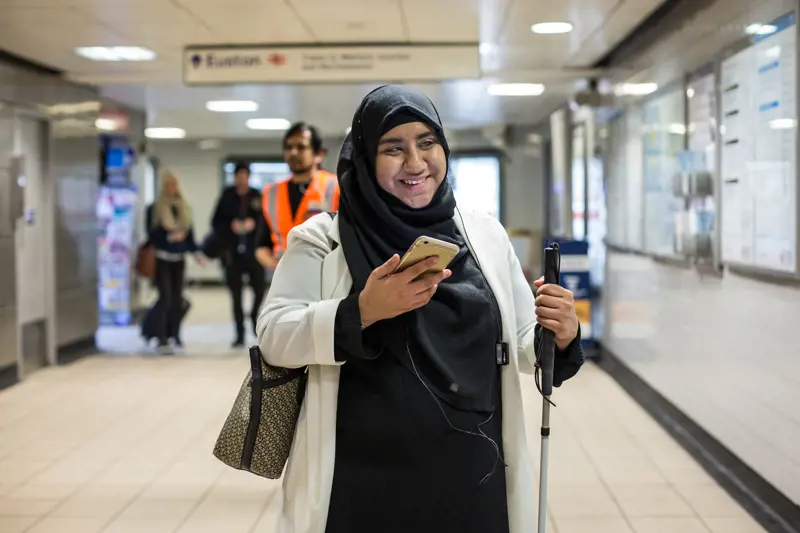
The Wayfindr project helped passengers with visual impairments to navigate the underground system © TfL
Learning from others
When LU became part of TfL, Gharatya took on the role of Head of Innovation, Technical Strategy, System Performance and Engineering Services. The new head of innovation role grew out of the rise of systems thinking at LU. The position was another way of encouraging engineers to look at the bigger picture and see what they could do for the business.
When it came to innovation, LU didn’t have a big R&D budget, Gharatya explains, but by drawing on external funding, from Innovate UK for example, it could create consortia of people who could work together. “What was enjoyable was creating those consortiums, often with people that we’d not worked with, people who have not worked in our industry.” It was a way of introducing them to a different area of potential growth for their business, he adds. Another innovation at TfL was the rise of international consulting. Gharatya explains that this was a way of exposing TfL’s engineers to transport systems and supply chains in other countries. Working in Singapore and advising other cities on their metro systems was a way of “broadening the horizons of the individuals that were involved, leading them to deliver even bigger and better things when they came back”.
Gharatya now sees his current role, overseeing major projects, as being to “enable our engineers to deliver the brilliant capital infrastructure that this city needs”. Systems engineering is now down to the “brilliant systems engineers who are leading that”.
Gharatya has taken on newer tasks. For him, climate change is one of the biggest challenges. “We have a real focus on climate adaptation. That’s filtered into the design process. That’s something I’m incredibly proud of as an organisation.” Again, the aim is to see that ‘climate thinking’ pervades the system at TfL. “All our engineers have access, and many of them have a full day’s carbon literacy training. We’ve committed to that.” Decarbonisation and sustainability are also a part of TfL’s corporate targets and programme delivery process.
Gharatya also sees TfL’s environmental credentials as crucial to its ability to recruit engineers. “From a skills agenda perspective, it’s also become a reason why people would like to join an engineering company.” Showing that you take environmental issues seriously is the key to attracting good talent. “The carbon credentials of any organisation will be, I think, a discriminator. If we can show a path to sustainability, not just building things, but improving the environment that we live in, if we can draw that parallel… why wouldn’t they want to become an engineer?”
Then there is the added attraction that TfL’s rail engineers can see the positive effects of their work. “We have the pull of being in a really exciting place, and people being able to see their efforts actually being implemented.” Gharatya puts it in personal terms. “I have helped change the city that I was born in, the city that I love. And some of those changes will be there for a very long time. And that’s not me on my own, of course. That’s my teams.”
I have helped change the city that I was born in, the city that I love. And some of those changes will be there for a very long time. And that’s not me on my own, of course. That’s my teams.
Kuldeep Gharatya FREng
Career timeline and distinctions
Studied mechanical engineering at the University of Westminster, 1993–1996. Graduate diploma in mechanical engineering, 1997. Mechanical engineer, London Underground, 1997–2004. Systems engineer, Transport for London (TfL), 2004–2008. MSc in systems engineering, 2006. SSR Programme, Systems Engineering Manager, TfL, 2008–2011. Head of Railway Systems, TfL, 2011–2013. Engineering Director, Transport Systems Catapult, 2013–2015. Head of Technical Strategy, Systems Performance and Innovation, 2015–2017. Non-Executive Director, Wayfindr, 2016–2020. Head of Engineering Technology and Data, Commercial Development and City Planning, 2017–2018. Fellow, Royal Academy of Engineering, 2022. Head of Engineering, Major Projects, 2018–present day.
Gharatya will soon have an opportunity to see just how universal his views on skills and systems engineering are beyond the rail sector. He will soon change transport modes when he takes up the role of Technical Services Director at NATS, the UK’s leading provider of air traffic control services. Again, he sees this in the context of the bigger system, and challenges of cities and mobility. “Those challenges don’t just restrict themselves to the physical landscape of a city.”
The UK has some of the most congested and complex airspace in the world, and inevitably in the future we will see greater use of drones and vertical take-off and landing craft. “We already have some of the best air traffic control systems and people in the world,” he says. “But we can’t stand still. What we’ve got to do is understand what that journey looks like in delivering the next phase of modernisation. For me, I think it’s going to be an incredibly exciting time.”
***
This article has been adapted from "Keeping complex systems on track", which originally appeared in the print edition of Ingenia 96 (September 2023).
Contributors
Michael Kenward OBE
Author
Keep up-to-date with Ingenia for free
SubscribeRelated content
Mechanical
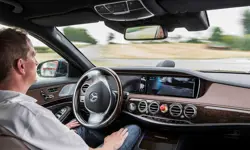
When will cars drive themselves?
There are many claims made about the progress of autonomous vehicles and their imminent arrival on UK roads. What progress has been made and how have measures that have already been implemented increased automation?

R&D investment makes good business sense
In just five years, Dr Ralf Speth FREng has presided over a revolution in design and manufacturing that has helped create a new family of engines and has overhauled Jaguar Land Rover (JLR) production facilities.
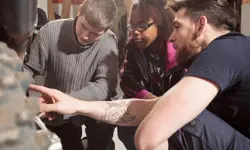
Bikes help improve skills and attitude
The Archway Project is an independently-funded scheme that is expanding its engineering-based programmes by providing BTEC certificates and diplomas. John Milton, the director of the project, explains what the charity does to help reduce anti-social behaviour and improve employment prospects.
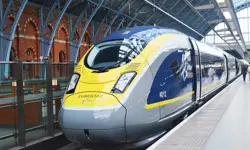
High speed evolution
In December 2010, Eurostar International Ltd awarded a contract for 10 new high speed trains to Siemens. The company has used a system developed over decades to maximise the performance and passenger-carrying ability of its 320km/h trains.
Other content from Ingenia
Quick read

- Environment & sustainability
- Opinion
A young engineer’s perspective on the good, the bad and the ugly of COP27

- Environment & sustainability
- Issue 95
How do we pay for net zero technologies?
Quick read

- Transport
- Mechanical
- How I got here
Electrifying trains and STEMAZING outreach

- Civil & structural
- Environment & sustainability
- Issue 95